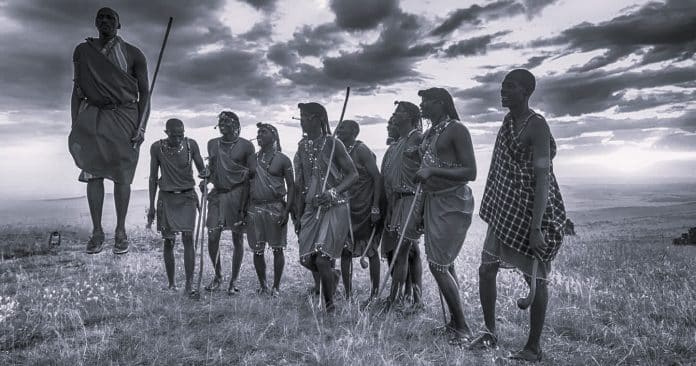Exploring the Vibrant Traditions and Rituals of the Maasai People in Kenya and Tanzania
Step into the world of the Maasai people and learn about the Maasai of Kenya and Tanzania culture. The Maasai is a vibrant ethnic group in Kenya and Tanzania with rich traditions and rituals that have been passed down through generations. The Maasai are known for their distinctive way of life, deeply rooted in a close bond with nature and a strong sense of community.
With their colorful clothing and bold jewelry, the Maasai have become iconic symbols of East Africa. But beyond their striking appearance, the Maasai have a fascinating culture that is worth exploring. From their intricate beadwork and traditional music and dance to their unique ceremonies and rituals, every aspect of Maasai life carries deep meaning and significance.
The history and origin of the Maasai tribe
The Maasai of Kenya and Tanzania culture has a long and rich history that dates back centuries. Believed to have originated from the Nile Valley, the Maasai migrated southward, settling in the present-day regions of Kenya and Tanzania. They are thought to have arrived in their current territories around the 15th century.
The Maasai have managed to maintain their cultural identity despite the influences of modernization and colonization. Their nomadic lifestyle, which was once centered around cattle herding, has shaped their traditions and rituals over time.
Traditional Maasai clothing and jewelry
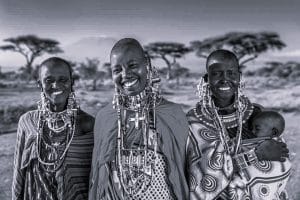
The maasai of Kenya and Tanzania culture are renowned for their distinct attire, which showcases their vibrant culture and heritage. Both men and women wear colorful clothing made from traditional cloth known as “shukas.” These shukas are often adorned with intricate beadwork, which is one of the hallmarks of Maasai craftsmanship.
Beadwork plays a significant role in Maasai culture, with each color and pattern carrying specific meanings. The jewelry worn by Maasai women, such as necklaces, bracelets, and earrings, are made from beads and reflect their social status and age. The intricate designs and vibrant colors of Maasai clothing and jewelry are a visual representation of their rich cultural heritage.
Maasai language and communication
The Maasai of Kenya and Tanzania culture have their own language, known as Maa. This language is unique to the Maasai people and is an integral part of their cultural identity. Maa is a complex language with its own grammatical rules and structure.
Communication within the Maasai community is not limited to spoken language; it also involves non-verbal cues and body language. The Maasai have developed a sophisticated system of gestures and expressions to convey messages and emotions. Understanding the Maasai language and communication is key to gaining insight into their traditions and rituals.
Maasai traditional ceremonies and rituals
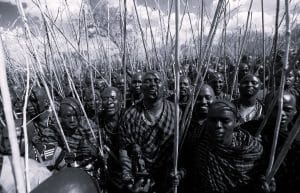
The Maasai of Kenya and Tanzania culture have a rich tapestry of ceremonies and rituals that form an integral part of their way of life. These ceremonies mark important milestones in the lives of individuals and the community as a whole.
One such ceremony is the “Eunoto” ceremony, which celebrates the transition of young Maasai warriors into adulthood. The ceremony involves elaborate rituals, including the shaving of heads, the wearing of new clothing, and traditional dances. It is a significant event that showcases the strength, bravery, and unity of the Maasai community.
The importance of cattle in Maasai culture
Cattle play a central role in the Maasai of Kenya and Tanzania culture and are considered a symbol of wealth, status, and prosperity. Cattle are not only a source of food and milk but also hold great cultural and spiritual significance.
The Maasai have developed a deep bond with their cattle, and their lives revolve around the care and management of these animals. Cattle are used in various ceremonies and rituals, and the number of cattle a Maasai owns is a measure of their social standing within the community.
Maasai warrior traditions and rites of passage
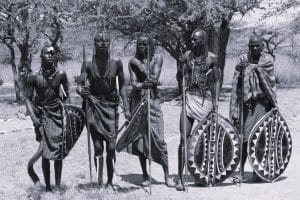
The Maasai warriors, known as “Morans,” are an essential part of the Maasai of Kenya and Tanzania culture. They are responsible for protecting the community and upholding the traditions and values of the Maasai people.
Becoming a Maasai warrior involves a series of rites of passage, marking the transition from adolescence to adulthood. These rites of passage include circumcision, initiation rituals, and training in bushcraft skills, such as hunting and tracking. The Maasai warrior traditions embody bravery, strength, and resilience, and are deeply rooted in the Maasai identity.
Maasai music, dance, and storytelling
Music, dance, and storytelling are integral parts of the Maasai of Kenya and Tanzania culture. Traditional Maasai music is characterized by rhythmic chanting, accompanied by the sounds of handmade musical instruments, such as bells, drums, and flutes.
Dance plays a significant role in Maasai ceremonies and celebrations, with each dance having its own unique movements and meanings. Through dance, the Maasai express their joy, unity, and spiritual connection with nature.
Storytelling is another important aspect of the Maasai of Kenya and Tanzania culture , with oral traditions passed down from generation to generation. These stories not only entertain but also educate and instill moral values in the Maasai youth.
Maasai handicrafts and artistry
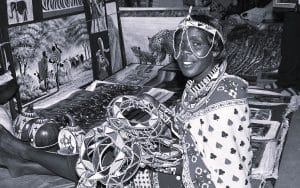
The Maasai people are known for their exceptional craftsmanship and artistic skills. From intricate beadwork to leatherwork and woodcarving, Maasai handicrafts are highly sought after for their beauty and craftsmanship.
Beadwork, in particular, is a prominent art form in the Maasai of Kenya and Tanzania culture. Maasai women create intricate beadwork designs using a variety of colors and patterns, often depicting animals, plants, and geometric shapes. These artworks are not only decorative but also hold cultural and symbolic significance.
The challenges and changes facing the Maasai community today
The Maasai community faces numerous challenges in the modern world, including land disputes, environmental degradation, and cultural assimilation. The encroachment of modernization and the impact of climate change have threatened the traditional way of life of the Maasai people.
Efforts are being made to preserve and protect the Maasai of Kenya and Tanzania culture and traditions. Organizations and individuals are working together to find sustainable solutions that balance the needs of the Maasai community with the demands of a rapidly changing world.
In conclusion, the Maasai people are guardians of a vibrant culture and heritage that continue to thrive in the face of modern challenges. Their traditions and rituals offer a window into a world rich in symbolism, community, and connection with nature. Exploring the customs and practices of the Maasai not only deepens our understanding of their way of life but also highlights the importance of cultural preservation and appreciation.
For more articles on the Maasai tribe click here!
























